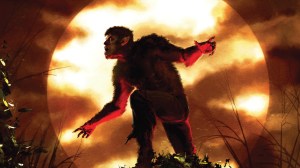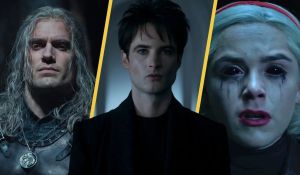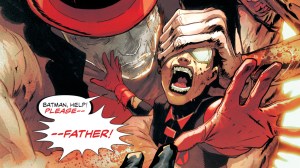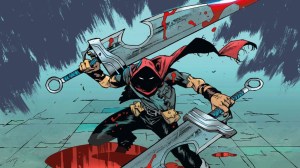For decades, Jack Russell, the original Werewolf by Night, has been a foundational pillar of Marvel Comics’ horror universe. Since his debut in the 1970s, he has embodied the tragic archetype of the cursed hero, a man locked in a perpetual war with the beast inside. While a beloved figure for seasoned comic fans, he remained largely within that niche corner of the universe. That all changed with the release of the critically acclaimed Disney+ special, Werewolf by Night, which thrust the character into the mainstream spotlight. It is fitting, then, that the special’s director, Academy Award-winning composer Michael Giacchino, now makes his comic book writing debut with a new story starring the lycanthrope he so successfully introduced to a new generation.
Videos by ComicBook.com
Unfortunately, Werewolf by Night: Blood Moon Rise #1 doesn’t know how to sustain its ambitions. Billed as a one-shot, the issue reads less like a self-contained story and more like a disjointed prologue to a larger event that is never defined, draining the project of its potential charm and leaving the reader with more questions than answers.
The story of Blood Moon Rise begins with a strong horror premise. Jack Russell awakens in the cold dungeons of Dracula’s castle, where he learns the Lord of Vampires has been holding him captive and manipulating his mind for an unknown length of time. As Jack fights to break free, he pieces together fragments of a larger plot, realizing Dracula’s scheme extends beyond him to include other creatures of the night, who are being used as pawns in an unseen game.
Giacchino’s script truly shines in these early moments, tapping directly into the moody, Universal Monsters-inspired energy that made his film so effective. On the first pages, the focus is squarely on Jack’s internal torment, the agonizing conflict between his desire to be a moral man and the feral impulses of the wolf wanting to be freed. This struggle has been the character’s most compelling trait for over fifty years, and by returning to these basics, Giacchino demonstrates a clear understanding of Jack Russell’s core psyche. The tragedy of his existence is palpable, and for a moment, Blood Moon Rise feels like the perfect comic book follow-up for Giacchino’s work at the Marvel Cinematic Universe.
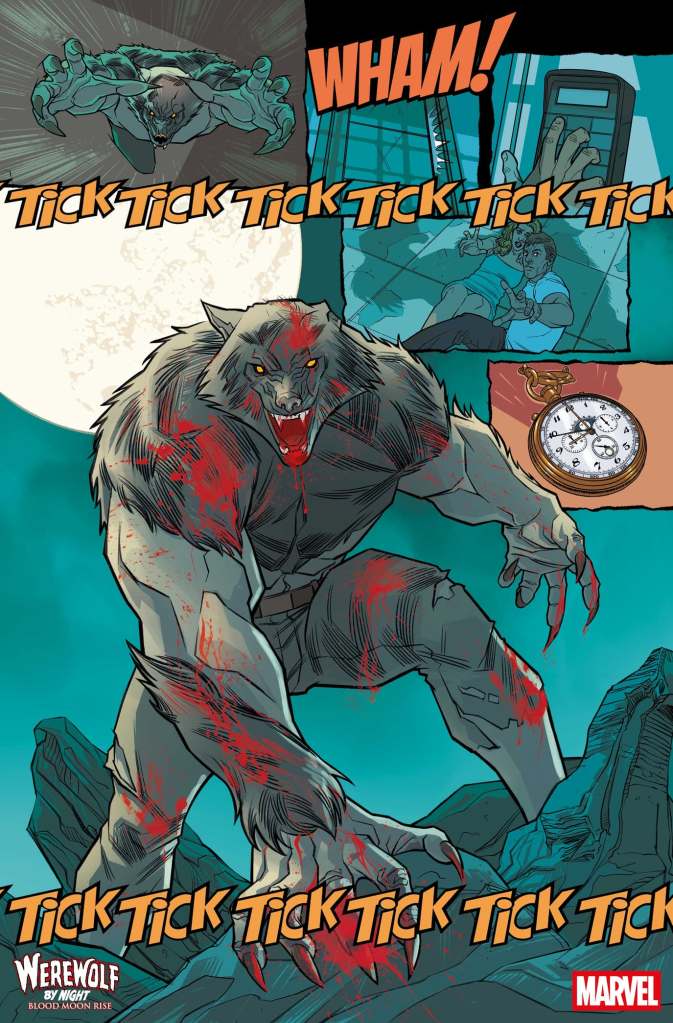
However, the moment the story pivots from this internal struggle to the broader conflict with Dracula, it begins to unravel. The plot introduces another fan-favorite Marvel monster and a mysterious, unidentified werewolf creature, but provides no context for their presence, only teasing their place on Dracula’s masterplan. Unfortunately, by the end of the issue, Dracula’s true intentions remain frustratingly vague, and the nature of the larger threat this adventure is supposedly teasing is never explained.
The story feels untethered, existing in a strange narrative limbo. It could be interpreted as a prequel to the events of the MCU special or perhaps a lead-in to another comic series, like the recent Werewolf by Night: Red Band. Yet, without any explicit connection to anything, the story fails on all fronts. It is not a satisfying one-shot, nor is it an effective setup for a bigger project. As such, the final page’s ambiguous “The… End…?” feels less like a clever cliffhanger and more like an admission that Marvel Comics intends to continue this story elsewhere, a decision that renders this specific issue insufficient on its own merits.
Adding to the main story’s problems is the lettering, which often feels intrusive and distracting. There is a clear stylistic intention to emulate the classic Marvel horror comics of the 1970s, an era when large, bombastic sound effects were a prominent feature of the page. While a noble idea in theory, its execution clashes with modern artistic sensibilities. The artwork by David Messina is cinematic and detailed, but it is frequently crowded by oversized lettering that pulls focus from the illustrations. In an age where comic lettering has become more nuanced and SFX more subtly integrated, these space-consuming elements clutter the pages.
Ironically, what truly saves the issue is the five-page backup story by Jason Loo. Titled “A Howling Nightmare,” the short features Jack, his sister Lissa, and the new Werewolf by Night, Jake Gomez, trapped in a surreal dreamscape by the classic villain Nightmare. In a fraction of the page count of the main feature, Loo delivers a masterclass in economic storytelling. The plot is simple, the characters’ motivations are clear, and the conflict reaches a genuinely satisfying conclusion. It provides everything a newcomer needs to understand the stakes while serving as a treat for long-time fans.
Most importantly, “A Howling Nightmare” also explores the internal conflict of its lycanthropic characters, making the comparison to the main story’s muddled execution all the more obvious. “A Howling Nightmare” proves that a compelling Werewolf by Night story is possible in a short format, and its success only highlights that Blood Moon Rise was conceived as part of something far too big for a single one-shot to contain.
Rating: 3 out of 5
What did you think of Werewolf by Night: Blood Moon Rise #1? Was the backup story the best part for you, too? Join the discussion in the comments!


